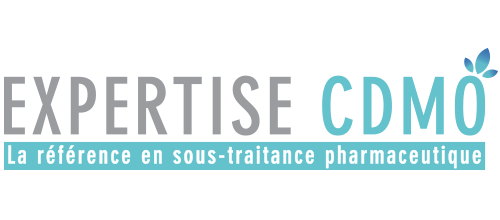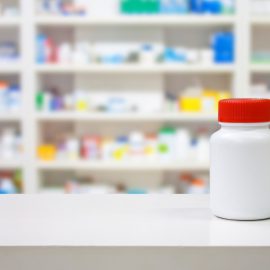No cosmetics without preservatives. The latter are indeed essential to any preparation to prevent the proliferation of germs, bacteria and other fungi that develop very well in skincare products. Of natural or synthetic origin, they allow a healthcare product to be preserved without oxidation.
Which solutions to avoid cosmetic preservatives ?
However, the use of certain synthetic preservatives is widely disputed because of their harmful effects on the skin and their impact on the development of cancers or the hormonal system. Nevertheless, their presence, although regulated, remains tolerated and their use is still widespread.
Solutions exist to avoid incorporating synthetic preservatives into your cosmetic formulations.
Types of preservatives
There are two types of conservatives:
- Synthetic antimicrobial preservatives such as parabens, phenoxyethanol, triclosan or natural agents such as sorbic acid and salicylic acid which prevent the proliferation of germs
- Synthetic antioxidant preservatives (BHA, BHT) or natural preservatives (vitamin E, vitamin C, polyphenols) whose role is to prevent the oxidation of the oily phases and the formation of free radicals.
Find the 14 Toxic Cosmetic Ingredients to avoid throught this post!
False ideas
Beware, “NATURAL” does not rhyme with “SECURITY”. Indeed, a natural preservative may be more harmful than a synthetic preservative, example of alcohol that can dry skin or essential oils that can lead to the risk of allergies. Because two precautions are better than one, integrate a natural preservative is good, check its perfect safety for the consumer is better.
In addition, the wording “no preservative” by some manufacturers to claim an absence of a particular preservative can mislead the consumer. Some manufacturers use substitutes that are unrecognized or not classified as preservatives but have a preservation action.
The benefits of plants and fruits
Everyone knows that: “eat 5 fruits and vegetables a day, it’s good for health” but integrating them into cosmetics is excellent too. And plants are not left out! We use them in our culinary preparations, we drink herbal teas and we ingest them in capsules because they make us well. Of course, all these raw materials must undergo some transformations, not so bad reassure you, before they can be incorporated into our preparations. Here are the top 15 natural extracts whose effectiveness is recognized on the preservation of cosmetic formulations:
Grapefruit seed extract
Obtained by fermentation processes is an excellent broad-spectrum antibacterial and anti-fungal that protects and preserves mold, germs and fungi. It also extends the life of water-based homemade cosmetics.
Benzoic acid
Naturally found in some fruits (cranberries, plums, berries, cinnamon …) is a very good preservative for water-based preparations.
Natural potassium sorbate
It’s a potassium salt of sorbic acid, a natural fatty acid extracted from the berries of the mountain ash. Antifungal and antibacterial, often combined with sodium benzoate, it is used as a preservative in preparations which pHs between 2 and 6.5 for a long time
Citric acid
Obtained through the fermentation of fruit sugars including lemon, lime and pineapple. It improves the life of a natural product thanks to its action on the pH.
Natural alcohol
Resulting from the fermentation of fruits or cereals, especially wheat. Extremely effective as a bactericidal agent but can be drying the skin because it is introduced in large amounts in cosmetics (10 to 20%). To avoid for products intended for the most sensitive skins.
Vitamin E
Contained in oils (sunflower, olive, wheat germ or soy) is an excellent natural antioxidant that prevents the rancidity of oils, creams and butters and has moisturizing properties. It is one of the indispensable ingredients of body care.
Natural salicylic acid
Il est obtenu à partir de l’écorce de Saule noir. Cet extrait est un allié puissant à incorporer dans vos préparations pour les peaux grasses, ternes ou à tendance acnéique. Il améliore aussi la conservation des produits aqueux et peut s’utiliser pour booster l’efficacité des conservateurs. Un actif très demandé et mieux toléré que l’acide salicylique synthétique.
L’acide ascorbique
It’s obtained from black Willow bark. This extract is a powerful ally to incorporate into your preparations for oily, dull or acne prone skin. It also improves the preservation of aqueous products and can be used to boost the effectiveness of preservatives. A highly demanded and better tolerated active ingredient than synthetic salicylic acid.
Liquid extract of propolis
It’s the natural bees’ antibiotic. It has anti-bacterial, anti-oxidant, purifying properties in addition to a strong repairing power. These remarkable virtues make it an ingredient of choice in the care composition for skin with imperfections but also for the manufacture of hygiene products (washing gels, toothpastes, mouthwashes …)
CO2 rosemary extract
It’s an antioxidant of 100% vegetable origin from the new generation, more stable than vitamin E for products such as vegetal oils and creams. Used as an additive to keep products longer by preserving them from rancidity and oxidation, its characteristic odor can also be an asset in a scented composition.
leucidal
Obtained by fermentation of radish by bacteria. It contains peptides with antibacterial properties that acidify the environment in which it is located. It offers an excellent tolerance for the skin and is suitable for the preservation of products intended for sensitive skin.
Naticide
It’s a broad-spectrum antibacterial and antifungal preservative that preserves cosmetic preparations containing an aqueous phase. Its sweet smell of vanilla and almond can also bring a little more to your formulas.
Sodium lactate
It’s a natural derivative of the lactic acid fermentation. Bacteriostatic agent to be used in combination with another broad spectrum preservative. It is also an excellent humectant that can be used as a replacement for glycerin.
Rosemary, tea tree or eucalyptus essential oils
Help to preserve the cosmetic formulas but it is favorable to use them in combination with a broad spectrum preservative. They also have many properties despite a pronounced odor that may please or displease. On the negative side, they can not be used in products intended for young children and pregnant or breastfeeding women
the resinous extract of Benzoin
Obtained from the resin of the Styrax officinalis. Recognized for its preservation properties, it is also characterized by a vanilla aroma that will give a delicious scent to your creams.
Small balance sheet
As we have seen, it is impossible to completely get rid of preservatives. Even if the manufacturers rigorously select the raw materials, if they use controlled atmosphere manufacturing processes, if they make sure to use a packaging limiting the contamination of the product, the preservative is the only guarantee of a cosmetic product shelf life. Nevertheless, solutions exist to limit their use. So, it’s up to you! Choose plants as for ENT treatments!



